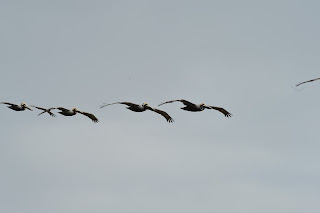The next advisor was due to arrive at 6am and we set the alarm for 5.45am. The alarm goes off just as Eric calls that the pilot boat with the advisor has just arrived. Throwing on clothes and brushing teeth, we make an appearance as quickly as possible. I make scrambled eggs for the crew, with Pepe on toast, as we cross Gatun Lake.
Gobbling up breakfast on deck, we watch the big cargo ships pass close by. To make the canal, the Chagres River was dammed and the area flooded to form the lake. We pass little islands that are in fact the tops of the mountains that once stood above the river. We also spot the tops of trees that poke up from the forest floor that is now the lake bed. Very strange.
We find out the yacht that had been on the other side of the raft, but we hadn't seen past the huge African Queen, is another New Zealand boat called Waka Irie. To keep up speed, they hoist the sails and sail across the lake - an awesome sight.
Our new advisor works in the visitors centre and is a wealth of knowledge on the canal. Work on the canal started in 1881 and finished in 1914. The first attempt to build a canal was by the French who attempted to construct a sea level canal with no locks. Ferdinand de Lesseps, the builder of the Suez Canal, headed this campaign. After loosing 22,000 lives from accidents, malaria and yellow fever and US$287,000,000, the French abandoned the effort in 1893.
In 1904, the US, under President Roosevelt, bought the French equipment, excavations and the Panama Railway for US$40 million. The US also paid the new country of Panama US$10 million plus a yearly fee, as well as Colombia US$10million plus US$250,000 p.a. for 7 years so that Colombia would recognise Panama as a new nation state. The US effort excavated a further 130,000,000 square metres (on top of the French 23,000,000 square metres), and lost another 5,600 lives to construct the canal - now with a locks system rather than a sea level canal.
 |
| Eric and our Advisor |
The Culebra Cut section of the canal was the most challenging part of building the canal. As we approach the cut, we consider the lives lost.
 |
| Approaching Centennial Bridge in the Culebra Cut |
 |
| Culebra Cut |
 |
| Centennial Bridge |
 |
Dee and Eric enjoying a quiet moment
 |
Today has two sets of locks in store for us. We reach the first set, the Pedro Miguel Locks, by 11am and raft again with African Queen.
 |
| Waka Irie preparing to raft |
As we approach the lock we see a crocodile surface. We aren't quick enough to get a full picture of him, but we do capture him as he sinks back below the surface.
Everything goes smoothly through the locks, and we wave at some passersby watching the excitement from the roadside on the other side of the fence. We eat lunch as we transit through the locks - that's got to be one of the strangest picnic locations!
 |
| Pepe our personal photographer and nerve calmer |
Still rafted, we motor to the Miraflores locks, our final hurdle before the Pacific.
 |
| line handler throwing the lines |
 |
| Going down |
 |
| Line handles walking the lines to the next lock |
 |
| Practice target for the line handlers |
In the final lock, before the gates open, we discuss at what point we are technically in the Pacific. Some say it is on the other side of the gates, others when you pass under the Bridge of the Americas. We decide that the other side of the gates is good enough for us. As the final gates open and we pass the threshold into the salt water of the Pacific, we let out a big cheer and have hugs all round.
 |
| Leaving the final lock |
As we head towards the Bridge of the Americas we blast the stereo loud with Men at Work "Land Down Under", Gary and I sing at the top of our lungs, followed by the New Zealand band the Black Seeds.
 |
| Heading towards the bridge of the Americas |
 |
| Looking across at the Panama City skyline |
 |
| US Military Vessel - With that name, we had to take a picture |
Our advisor lets us keep the daily schedule of the canal as a token of our transit.
A pilot boat approaches as we pass under the Bridge of the Americas to pick up our advisor. Then it is on to Balboa Yacht Club where another boat approaches to pick up our lines and tires as well as our line handlers, to take them ashore. We head on to La Playita anchorage, drop anchor and have just a few celebratory drinks.
We are now in the Pacific Ocean. Home is just over the horizon.
Note: Huge thank you to Aisha, who provided us with the aerial photos of Toodles in the locks. Aisha turned out to be the girl who we waved to on the other side of the fence at the Pedro Miguel locks. After seeing us, she headed up to the visitors centre and took some pictures of Toodles in the Miraflores locks. I am hugely thankful to this wonderful lady who went to the effort of seeking us out to provide us with the photos.






































No comments:
Post a Comment